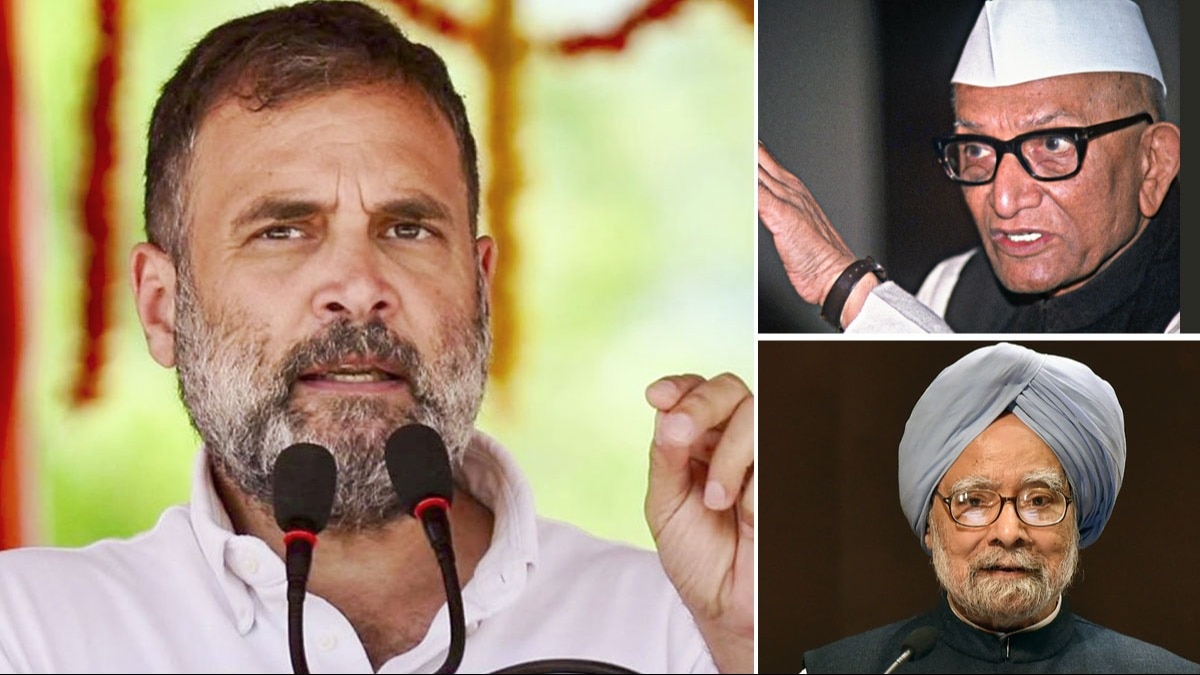
WHEN A CONGRESS-ERA DEPOSIT SCHEME LOCKED IN PEOPLE'S WEALTH
How does it feel to have your hard-earned money locked away from you? When all the wealth is just numbers, and you don't have access to it and the power to spend it? The 2018 demonetisation process gave a fleeting glimpse of that. However, there was a compulsory deposit scheme in the 60s and 70s, during Congress regimes, that forced people to part with their hard-earned money for up to five years. That money was locked in for years and couldn't be used.
The memories of those years when people's money would be compulsorily locked away from them have been refreshed by the politics during the 2024 Lok Sabha election. Â Â Â Â Â
Prime Minister Narendra Modi has sparked a political furore after he claimed that the Congress, as per its manifesto, would distribute the nation's wealth among "infiltrators" and "those who have more children", an indication towards the Muslim community. The Prime Minister has gone on to repeat the allegations in several other election rallies.
The controversy started after Rahul Gandhi said the Congress, if voted to power, would conduct a financial survey to ascertain who was in possession of the wealth of the country, and would then undertake an exercise to redistribute the same. Indian Overseas Congress chief Sam Pitroda added fuel to the fire after suggesting a US-like inheritance tax in India.
Amid the political firestorm, several social media users and BJP leaders have highlighted a scheme implemented by the Congress in 1963 and 1974 that mandated taxpayers to mandatorily deposit a portion of their earnings for a period of three to five years.
Known as the Compulsory Deposit Scheme (CDS), the legislation was implemented "in the interest of national economic development".Â
"PM Narendra Modi is very right about the Congress' plan of redistribution of wealth. Congress has done it twice in the past and will do it again. It's the same party that forced people to part with substantial amount of their salaries twice, in 1963 and 1974...," BJP spokesperson Suresh Nakhua posted on X.
It must be noted that the Congress has not promised any such scheme in its 2024 election manifesto. Even in 1963 and 1974, the deposits were not redistributed among the minorities and were repaid after the lock-in periods.
However, the relatively unheard of scheme, which kept people's hard-earned money from them, has piqued the interest of people.
WHAT WAS THE COMPULSORY DEPOSIT SCHEME?
The Compulsory Deposit Scheme bill was first introduced in 1963 by then Finance Minister Morarji Desai in the Union Budget. The legislation was brought after the first National Emergency was declared in 1962 during the India-China War.
"The scheme of compulsory deposit is somewhat novel and unorthodox, which we have had to undertake in the situation created by the Emergency," Desai said while introducing the bill.
Desai said the scheme would "restrain demand in the immediate future" besides helping in inculcating a "saving habit in the country".
The scheme was applicable to the whole of India, including government employees, taxpayers and property owners. The deposits had a 4% interest rate per annum and were repayable at the end of five years.
For example, individuals had to deposit 50% of the revenue generated from land use. Holders of immovable properties situated in urban areas had to deposit 3% of the annual rental value of the property.
Moreover, central and state government employees had to deposit 3% of their annual income from salaries.Â
The rate was the same for taxpayers whose residual income was Rs 6,000 or less. For those earning more, they had to deposit 3% of the first Rs 6,000 and 2% of the balance thereof, whichever was less.
Hefty penalties were also imposed on those failing to make the deposits.
SCHEME IMPLEMENTED AGAIN IN 1974
The legislation was again implemented in 1974, a year before the Emergency was imposed by then Prime Minister Indira Gandhi. Manmohan Singh was the chief economic adviser of the government.
The law came amid all-time-high inflation of 28.6% and faced severe backlash from the opposition. The effects of the 1971 Bangladesh Liberation War between India and Pakistan were still visible in the economy.
In the 1974 version of the legislation, the deposit rates were fixed between 4%-18% of the incomes of individuals. The scheme was applicable to agricultural incomes as well this time.
Those earning between Rs 15,000 and Rs 25,000 had to deposit 4 per cent of their current income. Those earning more than Rs 70,000 had to deposit Rs 7,100 plus 18% of the amount by which the income exceeded Rs 70,000.Â
Failure to make the payment resulted in a fine of 25% of the compulsory deposit.
The compulsory deposit scheme was hugely unpopular. Ahead of the 1984 Lok Sabha polls, the Congress promised to abolish the compulsory deposit scheme for taxpayers in its poll manifesto.
In a post on X in 2020, former economic advisor Sanjeev Sanyal called the Congress's compulsory deposit scheme "draconian" due to the high inflation rates during the period.Â
"Given the high inflation rates of that time, this was draconian by any standards... Given the inflation rates of that time, the 1963 and 1974 schemes effectively amounted to expropriation," he said.
Sanjeev Sanyal used the word "expropriation", which means the state's taking of property from its owner for public use, for the Congress's scheme.
Though the Congress hasn't mentioned any such scheme in its 2024 Lok Sabha manifesto, the political discourse around wealth distribution has brought back to public memory the compulsory deposit scheme when a part of peoples' money was locked away from them. Â
2024-04-24T07:24:51Z dg43tfdfdgfd